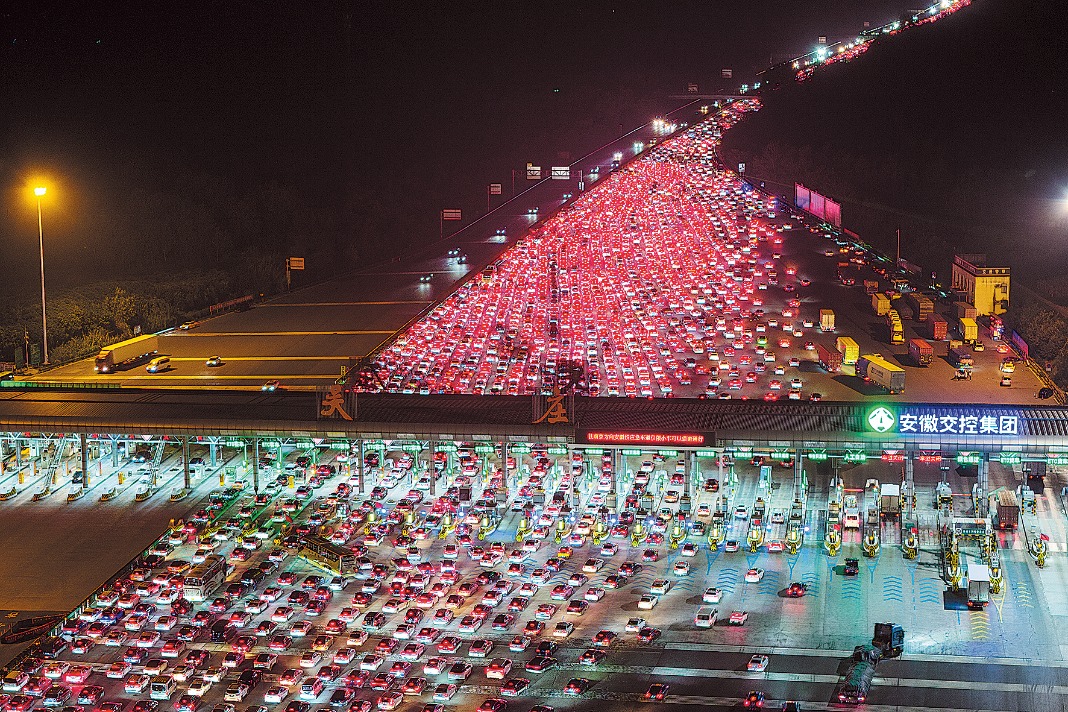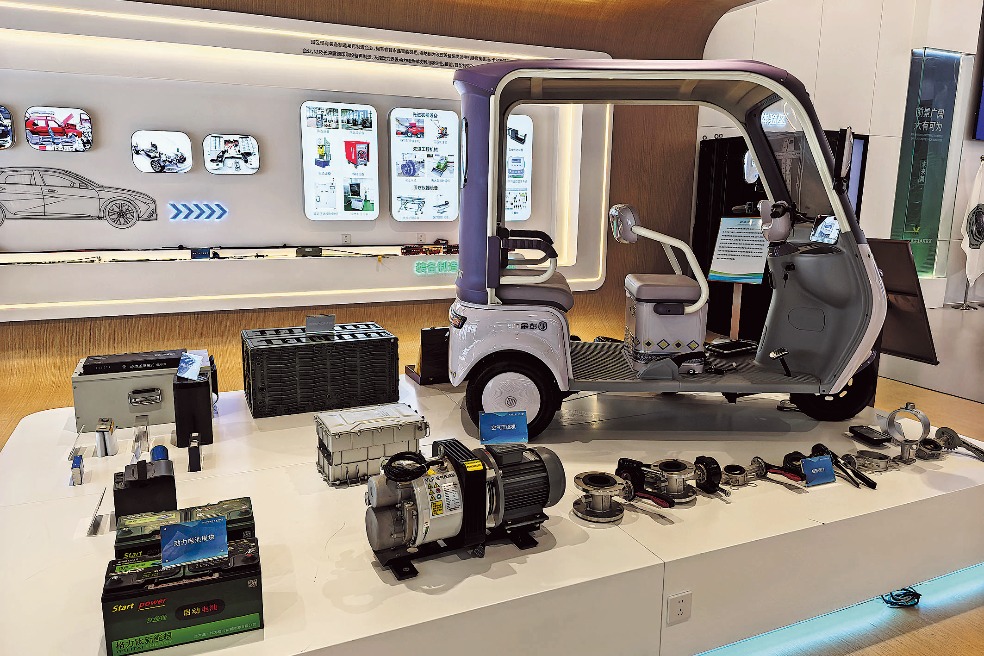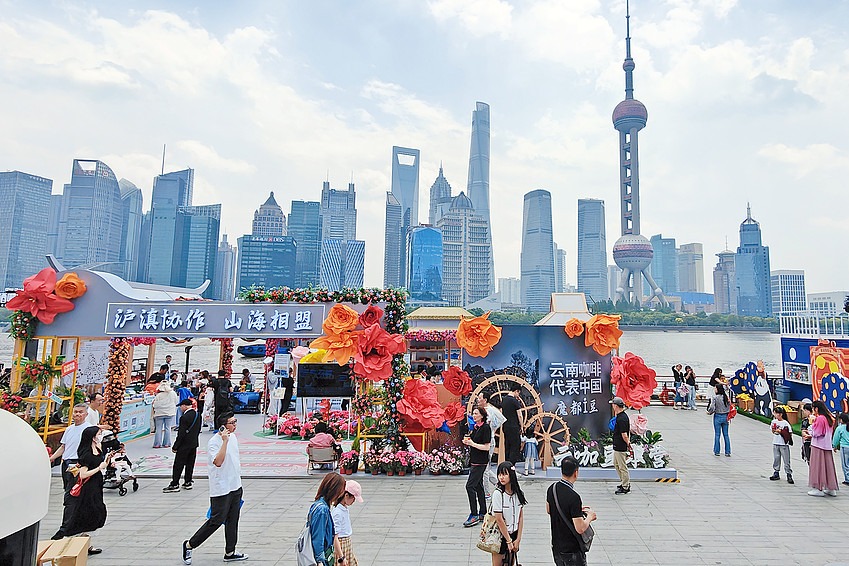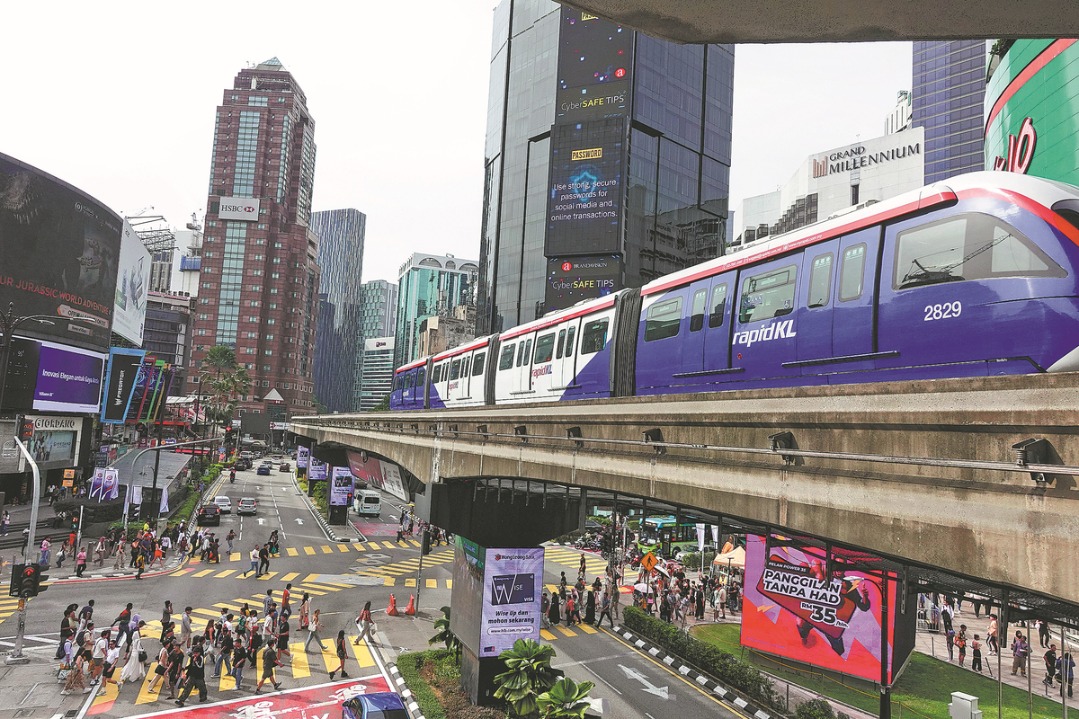Powered up for prosperity


Driven by the BRI, Xinjiang is progressing on a path of high-quality development at the front line of opening-up
The Xinjiang Uygur autonomous region, historically the heartland of the ancient Silk Road, has long bridged China with Central Asia and Europe. Its unique position linking the East and the West has provided a strong foundation for regional growth. In recent years, under the Belt and Road Initiative, Xinjiang has made significant strides in foreign trade, industrial growth and cultural exchange by capitalizing on its role as a pivotal hub.
As the core area of the Silk Road Economic Belt, Xinjiang has undergone a historic shift from an inland hinterland to a front line of opening-up. Leveraging its geographic advantages under the BRI, the region has rapidly transformed into a key hub for cross-border trade. A sprawling network of expressways and railways now connects Xinjiang closely with Central Asia and Europe, while high-standard industrial parks and development zones have emerged throughout the region. The China-Europe Railway Express trains departing from Urumqi International Land Port have become a visible symbol of dynamic global logistics corridors.
Before 2012, freight train traffic through Xinjiang was sparse. Since then, with the continued advancement of the BRI, the region has witnessed a steady expansion of China-Europe rail traffic. In 2024, Xinjiang handled a record 16,400 China-Europe freight trips, marking a 14 percent year-on-year increase. These routes have significantly shortened freight times between China and Europe, injecting new momentum into global trade flows.
Serving as a strategic bridgehead for China's westward opening-up, Xinjiang has actively deepened exchanges and cooperation with the Belt and Road countries. Guided by a win-win philosophy, the region has established institutional cooperation mechanisms and developed key platforms — ranging from pilot free trade zones to the China-Eurasia Expo — creating highly favorable conditions for foreign trade growth.
To date, Xinjiang has established economic and trade ties with 213 countries and regions, fostering stable partnerships through deepened collaboration in sectors such as technology, agriculture and energy. These efforts actively support shared development and mutual prosperity. In the first half of 2025, the region's total import-export value reached a record 280.82 billion yuan ($39.4 billion) — the highest ever for the period and ranking fourth nationwide.
With its ongoing efforts to open up, Xinjiang is drawing increasing investment from enterprises attracted by its geographic advantages and enhanced infrastructure. As a strategic gateway in China's westward opening-up, the region is strengthening its contribution to the country's international economic engagement.
As a key national energy base, Xinjiang is leveraging its geographic and resource complementarity with Central Asia under the Belt and Road energy cooperation framework to foster a new model of cross-border collaboration. Through joint construction of wind and solar power stations with Central Asian partners, the region is strengthening regional clean energy synergy while accelerating the transformation and upgrading of its conventional energy sector. The adoption of smart technology has raised productivity, and eco-friendly retrofits have reduced environmental impacts — progressively building a modern, integrated energy system where clean and conventional sources complement each other.
The commissioning of the first and second routes of west-to-east power transmission program has significantly enhanced the efficiency of China's west-to-east electricity transfer. These corridors not only balance interregional energy supply and demand but also create an efficient channel for Central Asian energy resources to reach China, further advancing high-quality energy connectivity and cooperation between the two sides.
The BRI has also injected new vitality into Xinjiang's traditional agricultural sector, generating remarkable outcomes. In 2024, the region's agricultural product trade totaled $2.77 billion, marking an average annual growth rate of 35 percent over three years. Alongside this trade expansion, Xinjiang has established 18 agricultural investment projects overseas, with an outbound investment stock approaching $300 million.
The region's specialty products such as tomatoes, walnuts and dates are gaining access to global markets through multimodal channels comprising the China-Europe Railway Express, advanced cross-border e-commerce platforms and enhanced cold-chain logistics. The deployment of advanced technologies including automatic identification and intelligent inspection at Baktu Port has cut the customs clearance time to approximately 10 minutes for fresh produce trucks. This enables morning shipments to be delivered to consumers in neighboring countries such as Kazakhstan by the evening.
From pioneering green energy transitions to achieving breakthroughs in agricultural exports, Xinjiang is demonstrating a successful model of high-quality growth and win-win cross-border cooperation under the BRI.
Beyond agricultural modernization, Xinjiang's development remains firmly rooted in improving people's livelihoods. The benefits of the BRI are thus being translated into a better quality of life for all residents. In line with the Health Silk Road vision, the region has integrated medical resources and opened up internationally, forming lasting healthcare partnerships with Central Asia and neighboring countries. By building a high-standard medical service center for the Silk Road Economic Belt, it has created a platform for international exchanges. This effort has not only upgraded regional healthcare capacity but also extended higher-quality medical services to grassroots communities, achieving a win-win result for both local well-being and international cooperation.
Within the framework of the BRI, Xinjiang has steadily upgraded its infrastructure in transportation, water conservancy and power supply. The region is building a modern, comprehensive transport network that has not only opened international corridors, but also strengthened urban-rural connectivity. This improvement has made travel easier for residents of all ethnic groups, enhancing their sense of fulfillment and well-being.
Capitalizing on its role as a core area of the Silk Road Economic Belt, Xinjiang has attracted numerous domestic and foreign companies, fostering industrial clusters in energy, logistics, manufacturing, cross-border e-commerce and more. Their presence has spurred the growth of supporting industries, boosted high-quality economic development and created substantial employment opportunities, effectively easing local job market pressure. In the first quarter of 2025, urban employment grew by some 130,100 jobs, up 2.83 percent year-on-year. This steady expansion of jobs has laid a firm foundation for stable income growth and a better life.
Moving forward, the region will further deepen collaboration with partner countries, pooling its unique advantages in location, resources and culture to build a more vibrant, open economic system.
The author is a professor at the School of Politics and Public Administration at Xinjiang University. The author contributed this article to China Watch, a think tank powered by China Daily.
The views do not necessarily reflect those of China Daily.
Contact the editor at editor@chinawatch.cn.


































